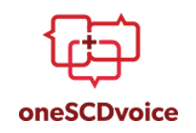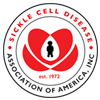Trusted Resources: Evidence & Education
Scientific literature and patient education texts
Randomized Feasibility Trial to Improve Hydroxyurea Adherence in Youth Ages 10–18 Years Through Community Health Workers: The HABIT Study
source: Pediatric Blood & Cancer
year: 2017
authors: Nancy S. Green, Deepa Manwani, Sergio Matos, April Hicks, Luisa Soto, Yina Castillo, Karen Ireland, Yvonne Stennett, Sally Findley, Haomiao Jia, Arlene Smaldone
summary/abstract:Introduction:
The main therapeutic intervention for sickle cell disease (SCD) is hydroxyurea (HU). The effect of HU is largely through dose-dependent induction of fetal hemoglobin (HbF). Poor HU adherence is common among adolescents.
Methods:
Our 6-month, two-site pilot intervention trial, “HABIT,” was led by culturally aligned community health workers (CHWs). CHWs performed support primarily through home visits, augmented by tailored text message reminders. Dyads of youth with SCD ages 10-18 years and a parent were enrolled. A customized HbF biomarker, the percentage decrease from each patients’ highest historical HU-induced HbF, “Personal best,” was used to qualify for enrollment and assess HU adherence. Two primary outcomes were as follows: (1) intervention feasibility and acceptability and (2) HU adherence measured in three ways: monthly percentage improvement toward HbF Personal best, proportion of days covered (PDC) by HU, and self-report.
Results:
Twenty-eight dyads were enrolled, of which 89% were retained. Feasibility and acceptability were excellent. Controlling for group assignment and month of intervention, the intervention group improved percentage decrease from Personal best by 2.3% per month during months 0-4 (P = 0.30), with similar improvement in adherence demonstrated using pharmacy records. Self-reported adherence did not correlate. Dyads viewed CHWs as supportive for learning about SCD and HU, living with SCD and making progress in coordinated self-management responsibility to support a daily HU habit. Most parents and youth appreciated text message HU reminders.
Conclusions:
The HABIT pilot intervention demonstrated feasibility and acceptability with promising effect toward improved medication adherence. Testing in a larger multisite intervention trial is warranted.
DOI: 10.1002/pbc.26689
read more full text
Related Content
-
Health Care Disparities Among Adolescents and Adults With Sickle Cell Disease: A Community-Based Needs Assessment to...Objective: Adolescents and adults with ...
-
Transition to adult care in sickle cell disease: A longitudinal study of clinical characteristics and disease severi...Background: Sickle cell disease (SCD) i...
-
Hydroxyurea linked to ‘significant, rapid’ reduction of sperm countSix months of hydroxyurea therapy detrim...
-
Hydroxyurea Treatment in Men with SCA Leads to Drop in Total Sperm Count, Study ShowsResearchers found that treatment with hy...
-
The Truth About Chronic Illness in CollegeAs I write this post I am sitting in my ...
-
What Should Teens Ask Their Doctors About Hydroxyureahttps://www.youtube.com/watch?v=VZn15uXQ...
-
Hydroxyurea for Children – A HRSA EMBRACE Projecthttps://www.youtube.com/watch?v=LprBMpPb...
To improve your experience on this site, we use cookies. This includes cookies essential for the basic functioning of our website, cookies for analytics purposes, and cookies enabling us to personalize site content. By clicking on 'Accept' or any content on this site, you agree that cookies can be placed. You may adjust your browser's cookie settings to suit your preferences. More Information
The cookie settings on this website are set to "allow cookies" to give you the best browsing experience possible. If you continue to use this website without changing your cookie settings or you click "Accept" below then you are consenting to this.




 +myBinder
+myBinder
